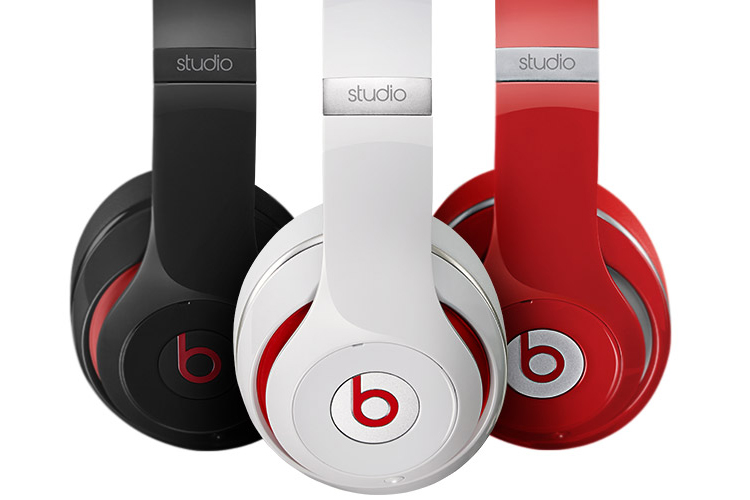The Headphones Revolution: Bright Colours, Street Styling Spark New Craze
Anyone considering buying headphones for a young relative this Christmas, take care before splashing out the £150 or more that the most fashionable – the Beats, or Skullcandy, or Urbanears models – can cost.
Each brand marks them out as one of a “tribe”, regardless of sound quality. Whereas 20 years ago the most important thing for a teenager was the brand of trainer on their feet – Nike, Reebok or Adidas – now it’s the brand covering their ears that matters.
Beats headphones, with their red cord and large “b” on the earpieces, began appearing in music videos in late 2008, largely through the efforts of the company’s co-founders, the rapper Dr Dre and the music entrepreneur Jimmy Iovine. That sparked rocketing sales to a teenage demographic looking for a new way to distinguish themselves out from their peers.
In doing so, Beats’ emergence showed that high-priced headphones would sell, becoming as much a fashion accessory as a gadget, commanding prices over £200 – a bracket previously reserved for the audiophile niche.
A decade ago, the white tendrils of an iPod’s headphones might have marked the wearer out as trendy; nowadays it makes them just one of the crowd, and Apple’s in-ear headphones are too common to bother with. A teenager wanting to stand out needs something big – and bold.
“Companies like Beats and Skullcandy have realised that kids today want something that looks better, over questions of sound quality,” says Sam Ruffe, who works at The Kinc, a marketing agency whose clients include Skullcandy.
And those kids (or their parents) will pay: worldwide, the market for headphones will be worth over £5bn ($8bn) this year, with 284m units shipped, according to the consumer consultancy Futuresource; over-ear headphones grabbed half of sales. And Beats alone will grab around £1.25bn – while the total market is forecast to grow by 5% annually for the next five years.
Skullcandy was originally designed for skiers and snowboarders, by Rick Alden, who got the idea on a chairlift in Park City, Utah. Starting in 2003, he managed to persuade skating and skiing shops to stock the product, which became known as an “extreme sports” brand.
Urbanears, meanwhile, brought Scandinavian design and a flourish of colour to the burgeoning headphone market, releasing two “collections” of headphones a year in limited-edition colours.
The continued success of Beats brought competition as these other brands began chasing the new demographic workingthedoors.co.uk, click through the next article, of people willing to spend money to wear their branding choice on their ears. Skullcandy moved off the slopes and into the high street. Now, they are more likely to be seen on the bus than on the piste.
Audiophiles aren’t impressed by the brigade of bolshy Beats products, which often pride bass and look over acoustic refinement. “I just bought a set of the Beats Solo HD headphones – it’s a Christmas gift for my 13-year-old daughter,” Chris Miller, a software engineer, told the Guardian, adding: “I think they are overpriced and you are paying a premium for the brand name. They aren’t bad, but I have headphones that sound better for half the price that I paid for the Beats.”
Sound quality, though, isn’t necessarily the point – which may have been missed by more traditional “audiophile” brands such as Germany’s Sennheiser, the Dutch brand Philips and the American Bose, who were caught unaware that colouring the earpiece and cord green or red could affect sales as much as their sound quality.
Andy Watson of Futuresource says you might struggle to tell some headphones apart at the factory. “With everyone owning the same generic-looking personal audio player or mobile phone, it’s the headphones that do the differentiating. There is certainly cachet and brand equity attached to many of the brands, beyond their intrinsic value. Much of it is about positioning a lifestyle rather than a product.”
Yet the growing tribalism of headphone ownership has led to derision in some quarters – such as the blog “Long Way From Compton”, which features pictures of people wearing Beats headphones, and measuring the distance from there to the notorious gang-ridden Los Angeles district from which Dr Dre emerged.
It’s in the can
Beats Studio
Arguably one of the headphones that kicked off the large and colourful trend, the original Beats by Dre headphones drove appeal through product placement in music videos. Pushed by the music marketing powerhouse of Dr Dre (pictured above) and Jimmy Iovine, Beats brought big, aggressive bass-y sound at a big price and made it fashionable.
Bowers & Wilkins P5
Proving that expensive, fashionable headphones could sound good, the Bowers & Wilkins P5 ooze luxury and sound great, with excellent noise isolation and good range, which makes the equally pricey Beats sound downright mediocre.
Bose QuietComfort
The commuter’s favourite, Bose took noise-cancelling technology – which silences the outside world by blasting sound waves to cancel out the noise leaving only the music audible – and made it popular. On their third revision, the Bose QuietComforts are still the active noise-cancelling headphones to beat for many.
Sennheiser Momentum
Long-standing quality audio company Sennheiser was late to the stylish headphone game, but its Momentum series combines a sophisticated look with top-notch acoustics.
Starck
A collaboration between the French designer Philippe Starck and the Bluetooth specialists Parrot, Zik headphones are some of the best wireless headphones around, with intuitive touch controls, active noise-cancelling, and sound profiles and acoustics that can be modified with iPhone and Android apps.
Skullcandy Crusher
Battery-powered bass means that the Crusher gives real wallop to what otherwise might just be loud music. Cavernous earpieces (made of “soft touch” leather) also come with a powered mini-amplifier, foldable hinge (for storage) and a microphone and remote on the detachable headphone cable. CA and SG
